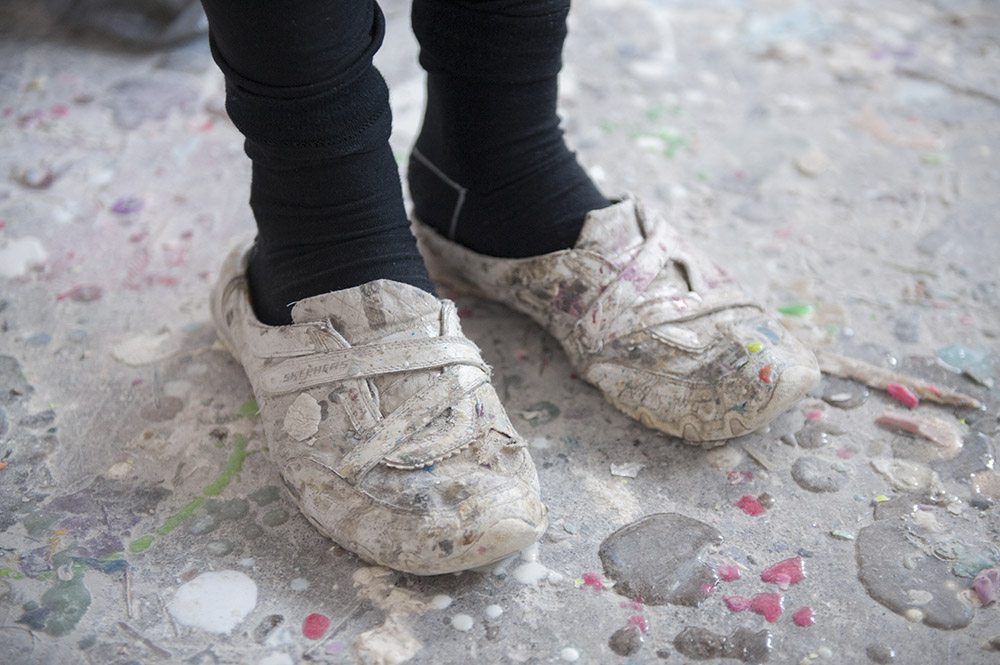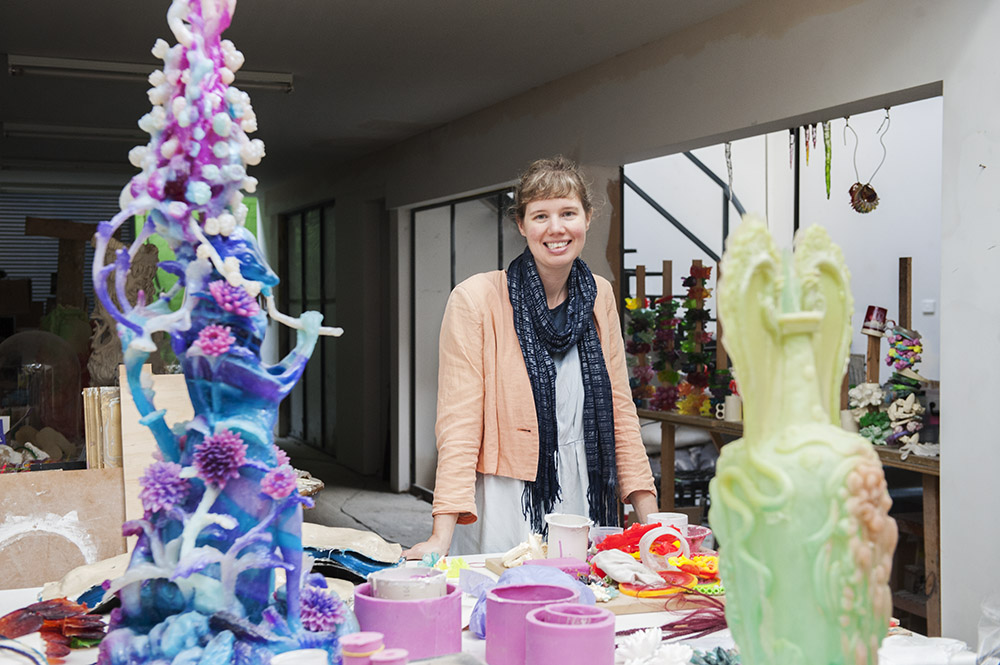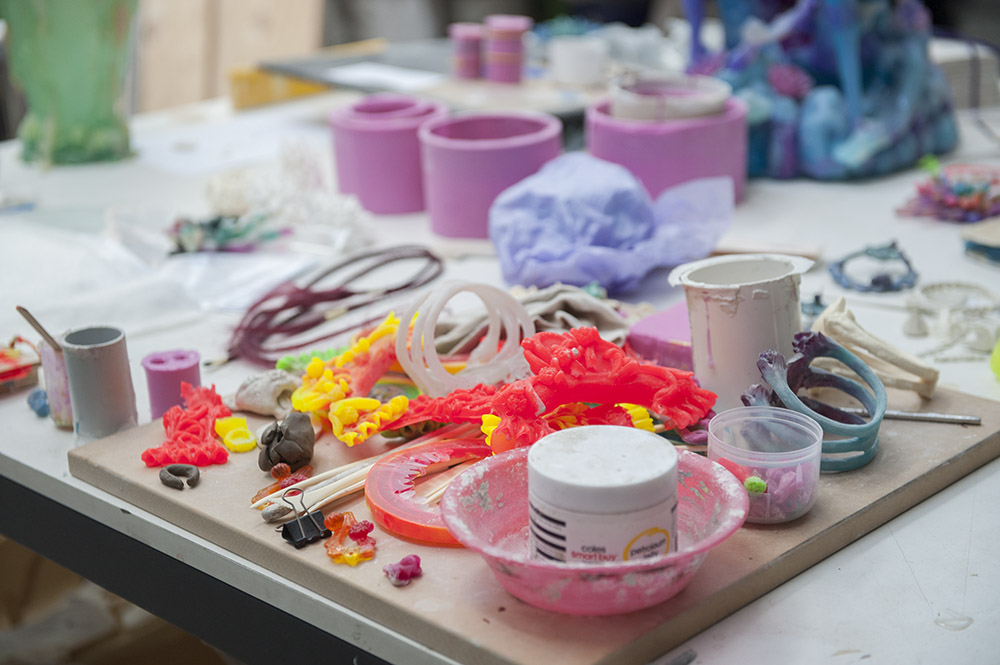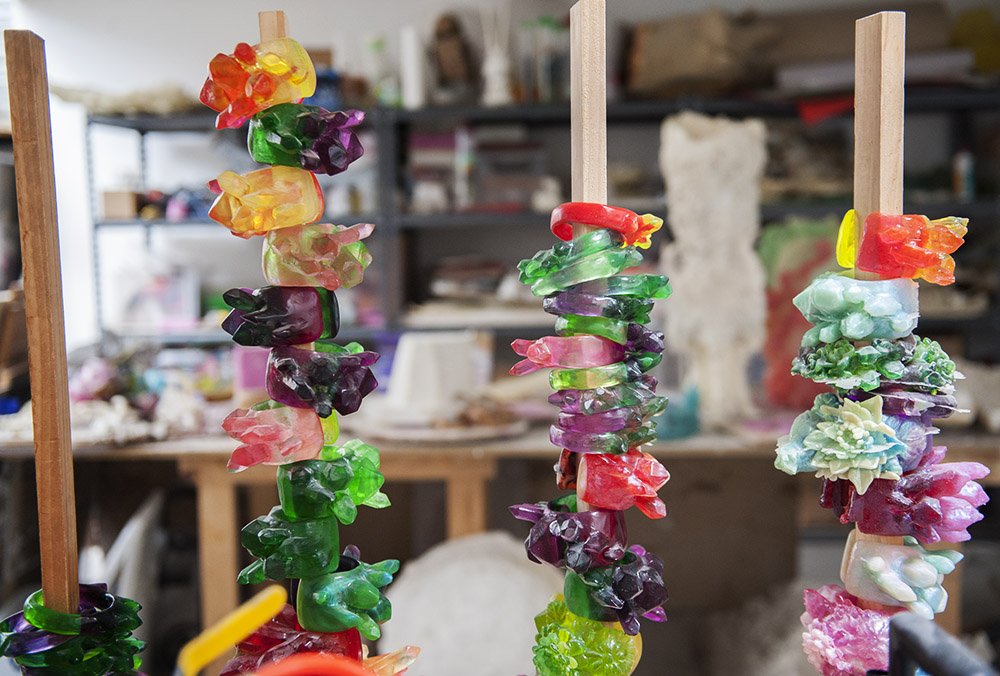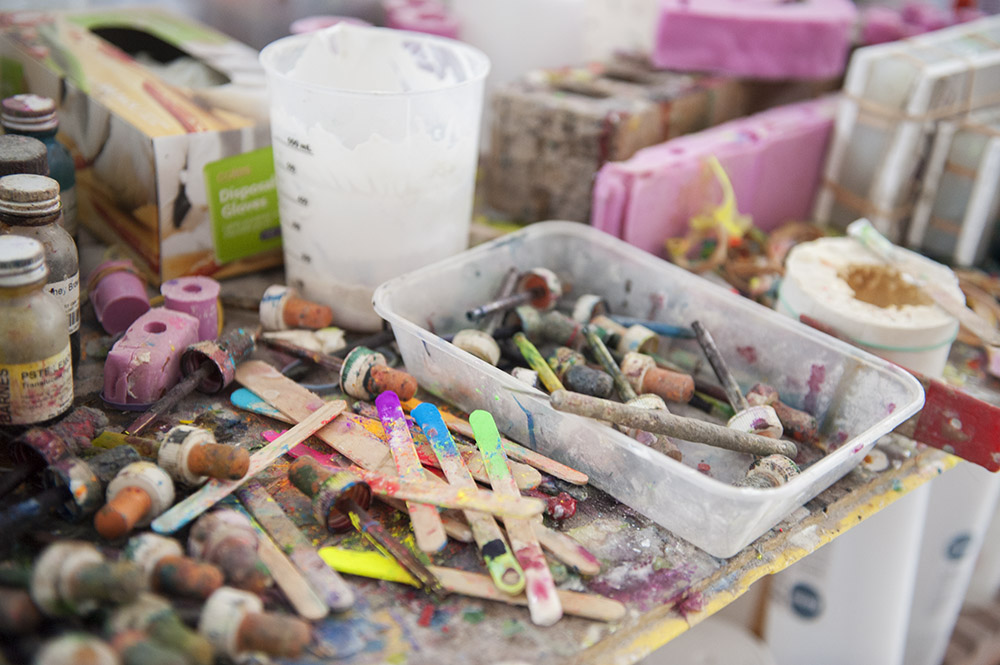Interview: Sarah Parkes, Smalltown
Macramé is having a serious resurgence in popularity thanks largely to artist Sarah Parkes.
Makers spies Parkes’ handiwork during visit to the Fitzroy design studio of Kloke, with whom the qualified graphic designer shares an open plan space. However this isn’t the first time that her intricate designs have caught our attention. With pieces hanging in various shops, cafes, bars and offices around town, it’s highly likely that you’ve seen her work too. She has truly modernized what was, until only recently, considered to be a very outdated craft.
Sarah Parkes work in Mr Banks, Melbourne
Months later we return to the creative studio to meet with the softly spoken Parkes, where she’s deep in the thick of knotting a commission piece bound for Sweden, her first international job. The large rope sculpture fights for space alongside a sleekly designed wall hanging, several lights, pot holders and in the corner of the room, a baby’s crib, where daughter Blue is sound asleep, oblivious to the controlled chaos that surrounds her.
Parkes: “I’ve always looked at craft books and was looking at macramé. I remember that I thought it was time for a reinvention. At the start I thought, ‘I can’t believe people haven’t done it yet’, macramé was always around but nobody was really doing it and I’m still waiting for someone else to. My love is the big stuff and the big commission pieces and still no one is, thankfully, doing it at the scale that I’m doing it, but I was lucky."
Sarah Parkes work in Arrow Energy, Brisbane
It takes more than luck to run a successful business, especially one within such niche confines, but Sarah isn’t afraid to push artistic boundaries. What started off as a career in small run jewelry design progressed into large-scale macramé after her friend, Rob Maniscalco, founder of Claude Maus, asked her to design a 7-meter wall hanging for his CBD concept store in 2008. Parkes followed this up with a couple of two story pot hangings for Space Furniture and installations for FUR Hairdressing. A newly discovered passion was ignited.
Parkes: “As soon as I did it I was just, ‘this is exactly what I want to be doing.’ I’ve been lucky to get some good commissions along the way, I get to push my practice in different directions, that’s part of the reason that I love what I do, I’m not pigeonholed into one type of design, I don’t just make pot hangings. I get to work across different fields.”
Sarah’s design business, Smalltown, is divided into two sections – Challenging commission work balanced out by a more straightforward capsule collection (made up of smaller, more budget friendly lights, pods and pot hangings). The recent acquisition of two assistants, who help out with the knotting of the capsule range, has helped to free up Sarah's time so that she can focus on larger scale installations. “It’s amazing having people work for you”, she laughs, “I did it for so long by myself and it took me a long time to feel ready to teach people.”
Parkes: “I shouldn’t say this but I think it’s [macramé] deceptively simple, however I say that after doing it for however many years… But really you can just repeat one knot again and again, it’s all how you move the rope around. It’s been really interesting having people in and realizing what standard I want things to be made at, and how important it is for people to get a product that looks like what they’re expecting. I always want to exceed people’s expectations.”
Parkes’ work is impressive, as is her ability to reinvent a once tired craft. The skilled tradeswoman makes a firm point of not working with natural fibers, therefore avoiding the retro connotations. Instead she works with colourful polyester ropes (all lovingly made in Melbourne), experimenting with spray paints and enamel dipping, all new and successful methods for colouring and molding rope into harder to hold shapes.
Before we leave the studio Makers can’t help but ask for a better look around. A large knotted curtain awaits completion, although it may have to be put on hold until her Swedish job is finished. “I love to make things,” states Sarah, “It’s been a slow progression because I don’t do anything quickly [laughs] and at the moment everything takes a lot longer because the baby needs a lot of attention. I never would have guessed that this is what I’d end up doing, but it just totally clicked with me.” We bid our goodbyes as baby Blue begins to stir in her crib. As much as Parkes adores her work she loves her family more, and right now the macrame might have to wait.





